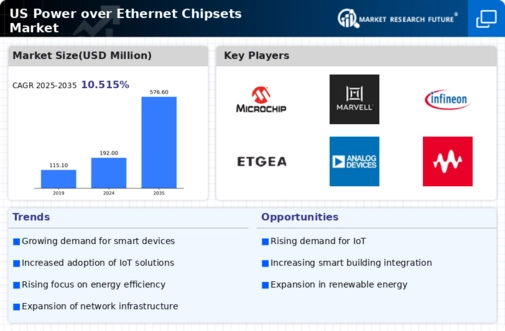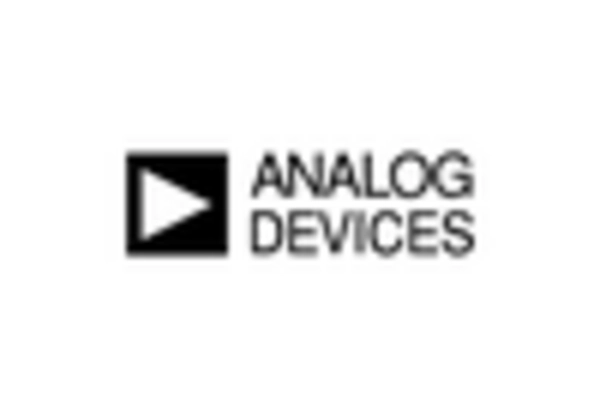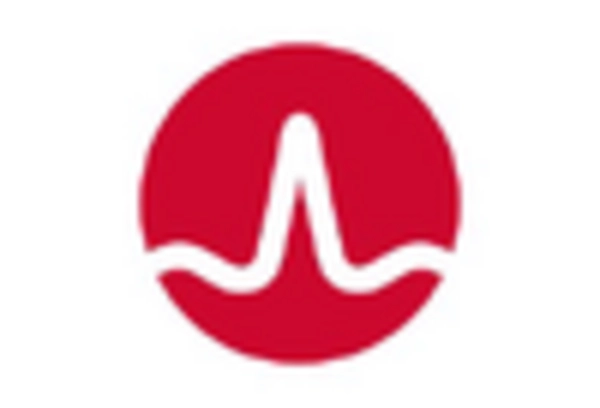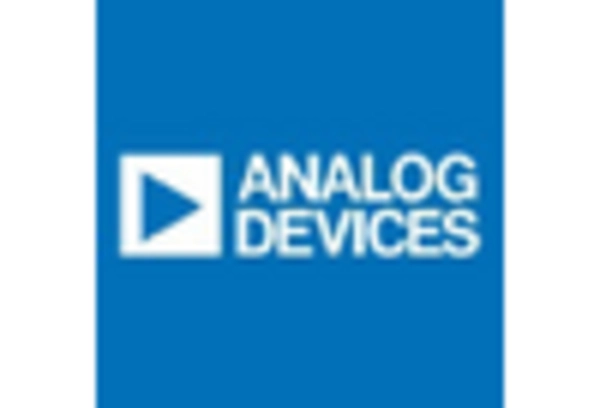Expansion of Network Infrastructure
The expansion of network infrastructure in the US is a critical driver for the power over-ethernet-chipsets market. With the increasing reliance on high-speed internet and connectivity, businesses are investing heavily in upgrading their network systems. The US government has allocated substantial funding for infrastructure improvements, which includes enhancing broadband access in urban and rural areas. This investment is expected to reach approximately $65 billion over the next few years. As network infrastructure expands, the demand for power over-ethernet-chipsets is likely to rise, as these chipsets provide a reliable solution for powering network devices while ensuring seamless data transmission. The power over-ethernet-chipsets market stands to gain from this infrastructure growth, as more devices require efficient power solutions.
Regulatory Support for Energy Efficiency
Regulatory support for energy efficiency initiatives is a significant driver for the power over-ethernet-chipsets market. In the US, various government agencies are implementing policies aimed at reducing energy consumption and promoting sustainable practices. For instance, the Energy Policy Act encourages the use of energy-efficient technologies in commercial buildings. This regulatory environment fosters the adoption of power over-ethernet-chipsets, as they align with energy-saving goals by enabling the use of low-power devices. The market is expected to benefit from these regulations, as businesses seek to comply with energy efficiency standards while leveraging the advantages of PoE technology. the power over-ethernet-chipsets market is expected to thrive in this supportive regulatory landscape.
Growing Need for Cost-Effective Solutions
The power over-ethernet-chipsets market is driven by the growing need for cost-effective solutions in various industries. Businesses are increasingly looking for ways to reduce operational costs while maintaining high performance. Power over Ethernet technology offers a dual advantage by providing both power and data through a single cable, thereby minimizing installation costs and reducing the need for additional electrical wiring. This is particularly appealing in sectors such as retail, healthcare, and education, where budget constraints are prevalent. Market analysis indicates that the adoption of PoE technology can lead to savings of up to 30% in installation costs. As organizations continue to prioritize cost efficiency, the power over-ethernet-chipsets market is expected to see sustained growth.
Rising Demand for Enhanced Security Solutions
The rising demand for enhanced security solutions is a pivotal driver for the power over-ethernet-chipsets market. As security concerns escalate across various sectors, organizations are increasingly investing in advanced surveillance systems and access control technologies. Power over Ethernet technology facilitates the installation of security cameras and other devices without the need for separate power sources, making it an attractive option for businesses. The market for security systems is projected to grow at a CAGR of around 8% through 2026, further fueling the demand for power over-ethernet-chipsets. This trend indicates that the power over-ethernet-chipsets market is well-positioned to capitalize on the increasing focus on security and surveillance solutions.
Increased Adoption of Smart Building Technologies
The power over-ethernet-chipsets market is experiencing a surge due to the increased adoption of smart building technologies across various sectors in the US. As organizations seek to enhance operational efficiency and reduce energy costs, the integration of power over Ethernet (PoE) solutions becomes essential. According to recent data, the smart building market is projected to grow at a CAGR of approximately 10% from 2025 to 2030. This growth is likely to drive demand for power over-ethernet-chipsets, as they facilitate the powering of devices such as security cameras, lighting systems, and sensors through a single Ethernet cable. Consequently, the power over-ethernet-chipsets market is positioned to benefit significantly from this trend, as more buildings incorporate advanced technologies to improve energy management and user experience.















Leave a Comment